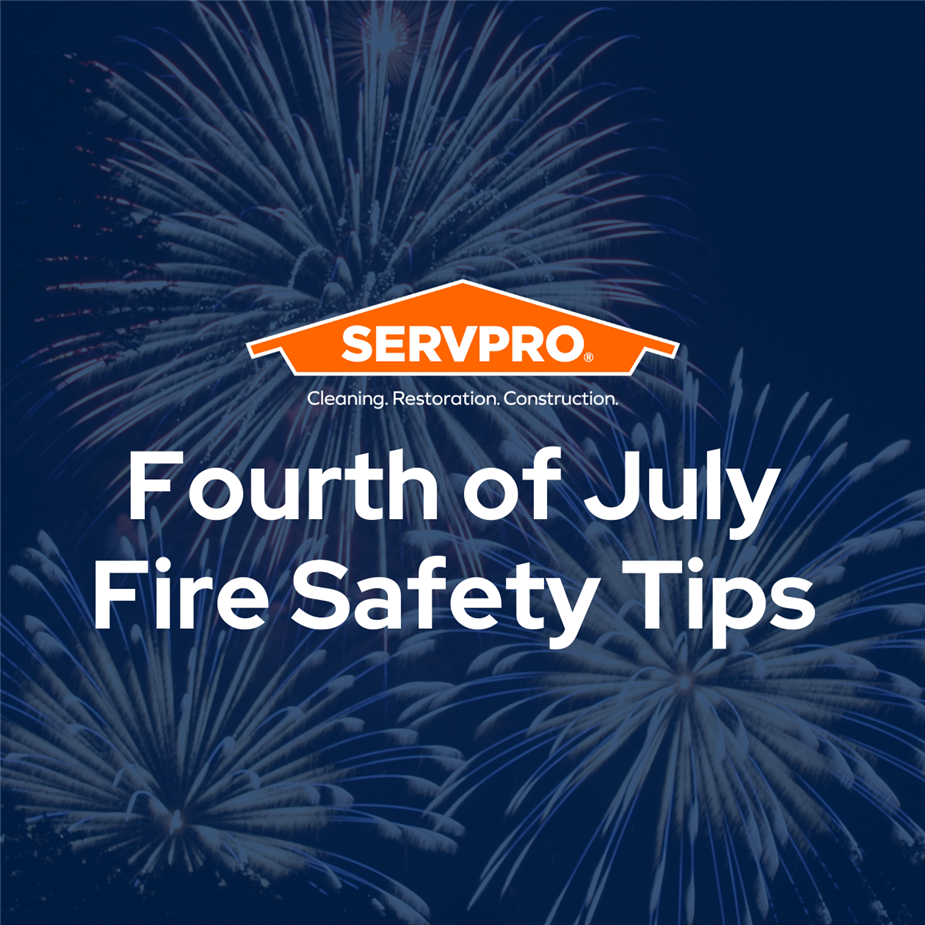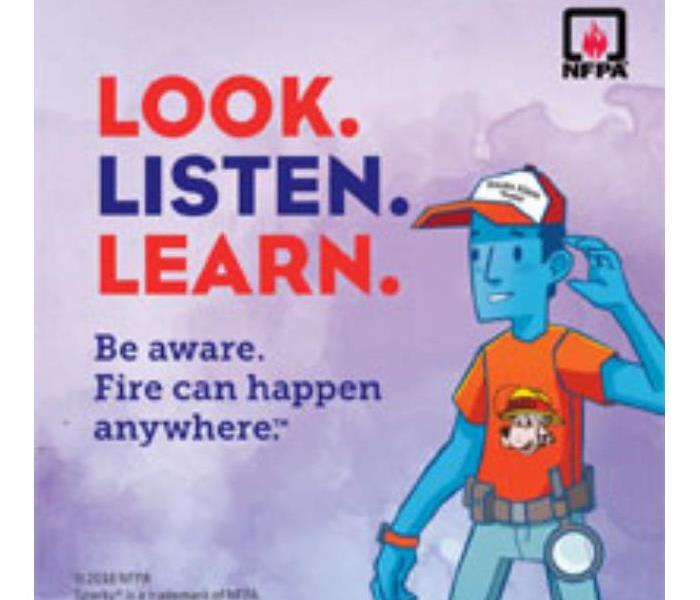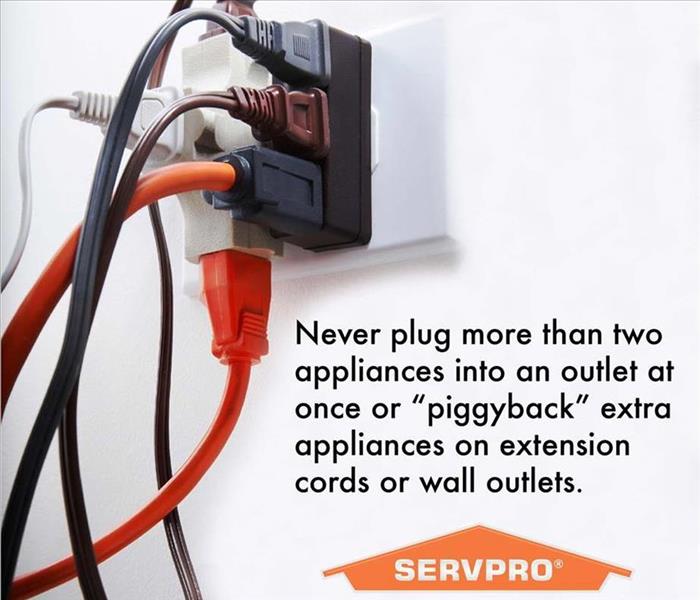Recent Fire Damage Posts
Recovering from Fire Damage: SERVPRO Can Help
10/28/2024 (Permalink)
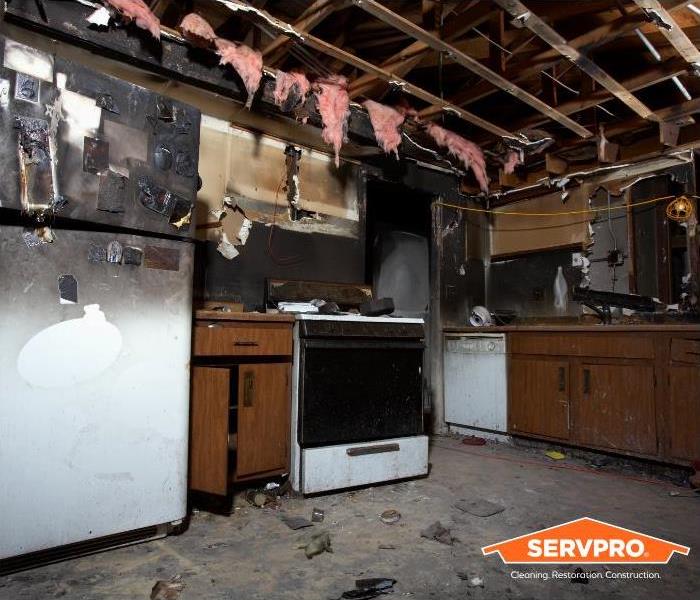 SERVPRO: When Fire Strikes, We Restore Your Kitchen from Devastation to Home Again
SERVPRO: When Fire Strikes, We Restore Your Kitchen from Devastation to Home Again
Experiencing a fire in your home or business can be a traumatic event that leaves behind significant damage and emotional distress. The aftermath can be overwhelming, with structural damage, smoke residue, and lingering odors that make it difficult to return to normalcy. SERVPRO of Roanoke, Montgomery, and Pulaski Counties understands the complexities of fire damage restoration and is here to assist every step of the way.
Comprehensive Fire Damage Restoration Services
Emergency Response: Time is critical after a fire. SERVPRO is available 24/7 to respond to emergencies promptly. The team assesses the damage, provides immediate board-up and tarping services, and secures the property to prevent further issues.
Damage Assessment: Certified professionals conduct a thorough inspection to evaluate the extent of the damage. This includes assessing structural integrity and identifying hidden risks that could affect safety.
Debris Removal: After a fire, debris can pose a hazard to property and health. SERVPRO safely removes charred materials, debris, and any items that cannot be salvaged, clearing the way for restoration.
Smoke and Soot Removal: Smoke and soot can penetrate various surfaces and linger long after the flames are extinguished. Specialized techniques and equipment are used to remove smoke damage from walls, ceilings, and belongings, restoring indoor air quality.
Odor Removal: Lingering odors from smoke can be persistent. SERVPRO utilizes advanced deodorization techniques to eliminate smoke odors, ensuring spaces smell fresh and clean.
Reconstruction and Repairs: Depending on the extent of the damage, reconstruction services are available to restore properties to their preloss condition. From drywall replacement to full reconstruction, SERVPRO is equipped to handle all aspects of the repair process.
Contents Restoration: Recognizing that belongings hold significant value—both emotionally and financially—SERVPRO specializes in restoring furniture, electronics, and personal items damaged by fire, smoke, or water used during firefighting efforts.
Why Choose SERVPRO?
SERVPRO is committed to excellence and customer satisfaction. Trained and certified professionals use industry-leading techniques and equipment to ensure efficient and thorough restoration. The team works closely with clients throughout the entire process, providing guidance and support to help navigate this challenging time.
For those facing fire damage, trust SERVPRO to help restore properties and reclaim peace of mind. Contact SERVPRO of Roanoke, Montgomery, and Pulaski Counties today for a free assessment and let the team help get you back on your feet.
Fourth of July Fire Safety Tips
7/1/2022 (Permalink)
The Fourth of July is a wonderful time of year to celebrate our freedom in the United States, as well as providing a chance to get together with friends and family, and enjoy some outdoor activities like having a barbeque, swimming, and watching fireworks. However, it can also be quite dangerous if the necessary precautions aren’t taken to provide a safe and fire-free environment. Check out these tips on a few common activities that are traditionally seen around this time of year.
- Barbeque and Grills
Always have someone monitoring the grill to prevent children approaching and to watch for potential fires. One minute away from the grill could potentially mean a potential disaster.
Always make a point to read the owner’s manual to make sure you are operating it correctly, check for gas leaks, and keep on a level surface away from home and other potentially flammable fixtures. It is also good practice to have fire extinguishers at the ready and never use a grill indoors.
- Fire Pits
Someone should always be assigned to monitor the fire to ensure it stays under control.
Use hard wood meant for burning on a fire and never use gas to get it going will help prevent unmanageable flames.
You should also keep the pit away away from trees, in an open area, have an extinguisher on hand, and make sure chairs and people are distanced from the fire itself. It is also good practice to keep yourself up-to-date on local fire pit laws to make sure your festivities comply with safety protocol set by the place you live in.
- Fireworks
When using fireworks, always point away from yourself and any other spectators in the area, use them one at a time, and keep buckets of water on hand. The operator should also be sober to prevent reckless or careless usage.
Another great option to see fireworks is to go to a professional show for a better experience, in the sky and safety wise! Many local organizations hold shows for the community to view, which is a great chance to have some fun without the risk.
- Children
Always monitor children outside while they are in close proximity to fires or flammable materials. A trusted adult should be assigned to watch the kids to prevent potential fire related injuries.
- Lightning
With local area predictions of rain and storms on the forecast, it is also good to protect the inside of your home from storm related fires. Use surge protectors on all electronics to avoid electricity related fires, refrain from using large appliances like washers and dryers, and unplug minor ones such as chargers.
Your family at SERVPRO of Roanoke, Montgomery, and Pulaski Counties wishes you a happy and safe Fourth of July!
Safety with Heating Sources
7/7/2021 (Permalink)
Tips to help prevent fires in your home or office from heating sources:
- Maintain heating equipment and chimneys by having them cleaned and inspected annually by a qualified professional.
- Use heating equipment that has the label of a recognized testing laboratory.
- All heaters need space. Keep flammable objects at least three feet away from heating equipment.
- Plug space heaters directly into outlets. Never use a power strip or extension cord.
- When using fuel burning heaters, use only the type of fuel specified by the manufacturer.
- Install and maintain carbon monoxide and smoke alarms inside your home and business. Test alarms monthly.
- Remember to turn off portable heaters before leaving the room or going to bed.
- When using a wood-burning fireplace, make sure the fireplace has a sturdy screen to help prevent sparks from flying into the room. Spent fireplace ashes should be cool before removing and putting them into a metal container. The container should be stored away from your home or business.
Safety tips provided by National Fire Prevention Association
The Facts about Smoke and Soot
7/6/2021 (Permalink)
Smoke and soot are both very invasive and can penetrate various cavities within your home, causing hidden damage and odor. Our smoke damage expertise and experience allows us to inspect and accurately assess the extent of the damage to develop a comprehensive plan of action.
Smoke And Soot Facts
- Hot smoke migrates to cooler areas and upper levels of a structure
- Smoke flows around plumbing systems, seeping through the holes used by pipes to go from floor to floor.
- The type of smoke may greatly affect the restoration process.
Different Types Of Smoke
There are two different types of smoke: wet and dry. As a result, there are different types of soot residue after a fire. Before restoration begins, SERVPRO of Roanoke will test the soot to determine which type of smoke damage occurred. The cleaning procedures will then be based on the information identified during pretesting. Here is some additional information:
Wet Smoke - Plastic and Rubber
- Low heat, smoldering
- Pungent odor, sticky, smeary.
- Smoke webs from a wet smoke are more difficult to clean
Dry Smoke - Paper and Wood
- High temperatures, fast burning
- Heat rises and therefore the smoke rises
Protein Fire Residue - Produced by evaporation of mater rather than from a fire
- Virtually invisible
- Discolors paints and varnishes
- Extremely pungent odor
Our Fire Damage Restoration Services
Since each smoke and fire damage situation is a little different, each one requires a unique solution tailored for the specific conditions. We have the equipment, expertise, and experience to restore your fire and smoke damage. We will also treat your family with empathy and respect and your treat your property with care.
Have Questions about Fire, Smoke, or Soot Damage?
Call Us Today!
SERVPRO of Roanoke
540-389-5818
Tips on Fire Safety in Your Home
5/7/2021 (Permalink)
Tips on Keeping Your Home Safe from Fire
There are simple stays every family can take to protect their home and loved ones from a potential house fire. Worst case scenario your home experiences a fire some of those tips will help make you aware faster and give better chances of everyone getting out safe.
1.Install smoke alarms on every level of your home, inside bedrooms and outside of sleeping areas
2.Test smoke alarms every month
3.Talk with all family members about a fire escape plane and practice the plan twice a year
4.If a fire occurs in your home, GET OUT, STAY OUT and CALL FOR HELP
5.Never go back inside for anything until safety officials clear it as safe
The American Red Cross website has these tips plus many more disaster prevention and awareness tips you can find on their site https://www.redcross.org
SERVPRO also offers Emergency Ready Profiles that are helpful in preparing your home for emergencies such as these.
Common Fire Hazards in the Home
5/7/2021 (Permalink)
Fire Hazards in the Home
House fires can happen in the blink of an eye if we aren’t careful. There are easy every day hazards we could avoid to help reduce the chance of a fire in your home.
Common Fire Hazards in the Home:
- Candles: Many candle fires are started due to unattended candle usage. Candles should not be left burning for hours at a time and its highly recommended to not use in the bedroom.
- Cooking: Kitchen fires are some of the top places home fires start. Never leave cooking unattended. If you leave turn off the burner, oven, or microwave. Clean your oven regularly and the rest of the kitchen appliances. Keep kids and pets clear of cooking areas and always turn pot handles in.
- Electrical fire: Use safe appliances. Keep appliances on level surfaces and remember to turn off all electrical appliances when not in use
- Matches and lighters: Keep out of reach of children. Make sure they are completely out when done using and if a lighter use all safety measures.
- Smoking materials: The misuse of products like cigarettes and pipes can cause house fires too. Make sure to put out all cigarettes and follow all guidelines for electrical smoking devices
These are just a few tips to help keep your home safe
Know The Fire Facts
10/16/2020 (Permalink)
October is Fire Prevention Month, so it is the perfect time for you to start getting educated on all things fire prevention related! Below are facts provided by the National Fire Protection Association to help get the word out on how dangerous, common, and preventable home fire damages can be!
Home Fires
- Fire departments respond to an average of one home fire every 86 seconds.
- Between 2011 and 2015, U.S. fire departments responded to an average of 358,500 home structure fires per year. These fires caused 12,300 civilian injuries, 2,510 civilian deaths, and $6.7 billion in direct damage.
- On average, seven people per day die in U.S. home fires.
- Cooking is the leading cause of home fires and home-fire injuries.
- For decades, smoking has been the leading cause of home-fire deaths.
- Heating equipment was involved in one in every five home-fire deaths.
Follow us on social media for more tips and facts on fire prevention!
Fire Safety Tips
10/16/2020 (Permalink)
These year the theme for NFPA’s Fire Prevention Week is “Serve Up Fire Safety in the Kitchen”. We will be sharing tips and facts all month to help you plan and practice in case of emergencies.
The NFPA States the Following:
Did you know?
In a typical home fire, you may have as little as one to two minutes to escape safely from the time the smoke alarm sounds. Escape planning and practice can help you make the most of the time you have, giving everyone enough time to get out. In a fire, mere seconds can mean the difference between a safe escape and a tragedy. Fire safety education isn’t just for school children. Teenagers, adults, and the elderly are also at risk in fires, making it important for every member of the community to take some time every October during Fire Prevention Week to make sure they understand how to stay safe in case of a fire.
Did you know?
Cooking is the #1 cause of home fires and home fire injuries. Unattended cooking is the leading cause of fires in the kitchen.
Recipe for safety
Before you serve a meal, it’s essential to serve up fire safety in the kitchen. There’s nothing like spending time in the kitchen cooking a delicious meal for family and friends or an appetizing treat for yourself. But do you know the important steps to take long before anyone takes the first bite?
Fire Prevention from NFPA
10/17/2019 (Permalink)
These year the theme for NFPA’s Fire Prevention Week is Not every hero wears a cape. PLAN and PRACTICE your ESCAPE! We will be sharing tips and facts all month to help you plan and practice in case of emergencies.
The NFPA States the Following:
Did you know?
In a typical home fire, you may have as little as one to two minutes to escape safely from the time the smoke alarm sounds. Escape planning and practice can help you make the most of the time you have, giving everyone enough time to get out. In a fire, mere seconds can mean the difference between a safe escape and a tragedy. Fire safety education isn’t just for school children. Teenagers, adults, and the elderly are also at risk in fires, making it important for every member of the community to take some time every October during Fire Prevention Week to make sure they understand how to stay safe in case of a fire.
"Look, Listen, Learn"
10/8/2018 (Permalink)
Even though we are dedicating the whole month of October to keeping you educated and up to date on everything Fire Prevention, this week is the week The National Fire Protection Association has deemed Fire Prevention Week! This year's theme is "Look. Listen. Learn. Be aware. Fire can happen anywhere.™” This theme does not only focus on how to be more contentious of how you can prevent potential fires, but it also focuses on how to react if you are ever put in a situation where a fire does occur.
The NFPA States the Following:
"Look" for places a fire could start. Take a good look around your home. Identify potential fire hazards and take care of them.
"Listen" for the sound of the smoke alarm. You could have only minutes to escape safely once the smoke alarm sounds. Go to your outside meeting place, which should be a safe distance from the home and where everyone should know to meet.
"Learn" two ways out of every room and make sure all doors and windows leading outside open easily and are free of clutter.
Preparation can make all the difference when it comes to fire safety and prevention, so act now and make sure you and your family are all informed!
Take The Fire out of Fireworks
6/26/2018 (Permalink)
With the 4th of July just around the corner, we are seeing the pop-up fireworks shops all over. They have every type of firework you can imagine ranging from a smaller scale popper to a full-blown sky display for your viewing pleasure. As beautiful as the sky may look lit up with all the colors of these fireworks, it is important that we are making sure we are taking the necessary precautions to keep our loved ones, neighbors, and surrounding homes safe on this holiday.
Fireworks cause nearly 20,000 home fires each year! (NFPA.org)
This why it is safest to leave the firework shows to the professionals, but if you must put on your own show it is important to follow these recommended safety tips provided by Fireworksafety.org to ensure you are keeping yourself and your surroundings as safe as possible.
Recommended Safety Tips:
- Obey all laws regarding the use of fireworks
- Know your fireworks: read the cautionary labels and performance descriptions before igniting
- A responsible adult should always be present to supervise all firework activities. NEVER allow fireworks to get into the hands of children
- Alcohol and fireworks do not mix.
- Wear safety glasses when shooting off your fireworks
- light one firework at a time, and move away quickly
- Use fireworks outside in a clear area, away from all buildings and vehicles
- Never relight a "dud" firework. Wait 20 minutes and then soak it in a bucket of water
- Always have a bucket of water and charged water hose nearby.
- Never carry fireworks in your pocket or shoot them into metal or glass containers
- Do not experiment with homemade fireworks
- Dispose of spent fireworks by wetting them down and place in a metal trashcan away from any building or combustible materials until the next day
- FAA regulations PROHIBIT the possession and transportation of fireworks in your checked baggage or carry-on luggage
- Report illegal explosives, like M-80s and quarter sticks, to the fire or police department
Don't let a firework mishap ruin your Independence Day, be safe when handling any and all fireworks!
How to Safely Respond to a Fire
5/9/2018 (Permalink)
House fires cannot always be avoided, but it is important that you know how to respond when they do occur. Following these tips provided by the Red Cross will make sure that you are handling and responding to a house fire in the safest way possible to get yourself to safety.
Escape Tip 1: Do NOT Open a door that feels warm to the back of your hand
Make sure you are checking all doors for heat with the back of your hand before you attempt to open them. The presence of heat on a door or doorknob could mean that there is fire on the other side of the door. It is important to try to find another exit. If there are no other exits, stay put and open a window to yell and wave a white item out of, such as a pillowcase or tee shirt. This is an important signal for help.
Escape Tip 2: Stay Low
When moving through your house, stay low and crawl to safety! This will help make sure you are not breathing in too much of the harmful smoke from the fire.
Escape Tip 3: Stick to Your Plan
If you are experiencing a house fire, make sure you are sticking to the escape plan your family has gone over. Get out of the house as quickly and safely as possible, do NOT go back in, and call 911.
Fire Safety Tips for your Dryer from FEMA
11/27/2017 (Permalink)
Clothes dryer do’s
Installation
- Have your clothes dryer installed by a professional.
- Make sure the correct electrical plug and outlet are used and that the dryer is connected properly.
- Read manufacturers' instructions and warnings in use and care manuals that come with new dryers.
Cleaning
- Clean the lint filter before and after each load of laundry. Don’t forget to clean the back of the dryer where lint can build up. In addition, clean the lint filter with a nylon brush at least every six months or more often if it becomes clogged.
- Clean lint out of the vent pipe every three months.
- Have your dryer cleaned regularly by a professional, especially if it is taking longer than normal for clothes to dry.
Maintenance
- Inspect the venting system behind the dryer to ensure it is not damaged or restricted.
- Put a covering on outside wall dampers to keep out rain, snow and dirt.
- Make sure the outdoor vent covering opens when the dryer is on.
- Replace coiled-wire foil or plastic venting with rigid, non-ribbed metal duct.
- Have gas-powered dryers inspected every year by a professional to ensure that the gas line and connection are together and free of leaks.
- Check regularly to make sure nests of small animals and insects are not blocking the outside vent.
- Keep the area around the clothes dryer free of items that can burn.
- If you will be away from home for an extended time, unplug or disconnect the dryer.
Clothes dryer don’t's
- Don’t use a clothes dryer without a lint filter or with a lint filter that is loose, damaged or clogged.
- Don’t overload the dryer.
- Don’t use a wire screen or cloth to cover the wall damper. They can collect lint and clog the dryer vent.
- Don’t dry anything containing foam, rubber or plastic. An example of an item not to place in a dryer is a bathroom rug with a rubber backing.
- Don’t dry any item for which manufacturers' instructions state “dry away from heat.”
- Don’t dry glass fiber materials (unless manufacturers' instructions allow).
- Don’t dry items that have come into contact with anything flammable like alcohol, cooking oils or gasoline. Dry them outdoors or in a well-ventilated room, away from heat.
- Don’t leave a clothes dryer running if you leave home or when you go to bed.
Holiday Cooking Safety Tips
11/14/2017 (Permalink)
Each November, families gather to celebrate Thanksgiving by preparing a delicious feast, but
if you don’t practice safe cooking habits, your holiday could become hazardous very quickly.
According to the National Fire Protection Association, cooking fires are the number one cause of home fires and home injuries. The
leading cause of fires in the kitchen is unattended cooking. It’s important to be alert to prevent cooking fires.
* Be on alert! If you are sleepy or have consumed alcohol don’t use the stove or stovetop.
* Stay in the kitchen while you are frying, grilling, boiling, or broiling food.
* If you are simmering, baking, or roasting food, check it regularly, remain in the kitchen while food is cooking, and use a timer to remind you that you are cooking.
* Keep anything that can catch fire—oven mitts, wooden utensils, food packaging, towels, or
curtains—away from the stovetop.
If you have a cooking fire, Follow safety protocols to help keep you and your family safe:
*Just get out! When you leave, close the door behind you to help contain the fire.
* Call 9-1-1 or the local emergency number after you leave.
* For an oven fire, turn off the heat and keep the door closed.
* If you try to fight the fire, be sure others are getting out and you have a clear way out.
* Keep a lid nearby when you’re cooking to smother small grease fires. Smother the fire by sliding the lid over the pan and turn off the stovetop. Leave the pan covered until it is completely cooled.
SERVPRO of Roanoke wish you a safe and happy holiday season.
Source: National Fire Protection Association
Stop the fire BEFORE it happens
8/4/2016 (Permalink)
Before you send your child off to college, make sure you are complying with the safety regulations. The campus usually requires documentation of flame retardant materials.
“Curtains, draperies, wall hangings, blankets, banners and other decorative materials suspended from wall, closets, or other vertical surfaces must be flame resistant or noncombustible. Proof of flame resistance may be requested during a fire inspection”
"2016 Virginia Tech Division of Student Affairs; Virginia Statewide Fire Prevention Code; Fire & Safety Regulations for Residents ©"
Flame Stop is a water-based fire retardant coating for most synthetic and natural fibers, and is particularly recommended for the treatment of drapes, upholstery, fabrics, paper, rugs, carpets, mattress covers, bedspreads and most porous decorative materials. Flame Stop is a pyrolytic formulation that prevents the spread of flame by developing a self-extinguishing reaction.
Please call- 540-389-5818 for a free estimate
Dryer Fires on the rise
11/6/2015 (Permalink)
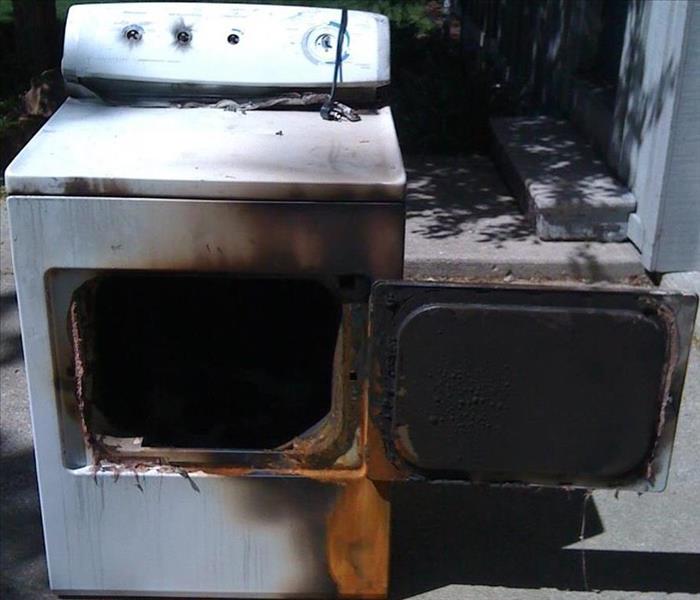 Dryer Fire caused by clogged dryer vent
Dryer Fire caused by clogged dryer vent
Dryer fires are responsible for a significant number of damages, injuries, and deaths every year. There are approximately 15,600 structure fires, 400 injuries, and 15 deaths reported annually as a result of dryer fires. According to the United States Fire Administration, every year clothes dryer fires account for over $100 million in losses. Also, dryer fires involving commercial dryers have a 78% higher injury rate than residential dryer fires.
Holiday Fire Safety Tips
12/8/2014 (Permalink)
Follow these simple safety tips, to reduce the fire risk to your home or buisiness this holiday season:
1. Place Christmas trees, candles and other holiday decorations at least 3 feet away from heat sources.
2. Purchase flame retardant metallic or artificial trees. If purchasing a live tree, water regularly.
3. Make sure light strings or other decorations are in good condition. Do not use anything with frayed electrical cords.
4. Unplug tree and holiday lights before leaving home or going to bed.
5. Never use lit candles to decorate a tree. Always extinguish candles before leaving the room or going to bed.
6. Use only sturdy tree stands designed not to tip over.
7. Keep flammable items away from stove top - oven mitts, pot holders, wooden utensils, etc.
8. Designate one person to walk around your home to make sure that all candles and smoking materials are properly extinguished after guests leave.
9. Smoke alarms save lives. Install smoke alarms near your kitchen, on each level of your home, near sleeping areas, and inside and outside bedrooms if you sleep with doors closed. Test smoke alarms monthly and replace batteries at least once a year.
Fire Safety Tip
8/4/2014 (Permalink)
Overloaded outlets can cause #fires and other life threatening dangers. Keep your home or office safe by understanding your property's electrical demands.






 24/7 Emergency Service
24/7 Emergency Service
